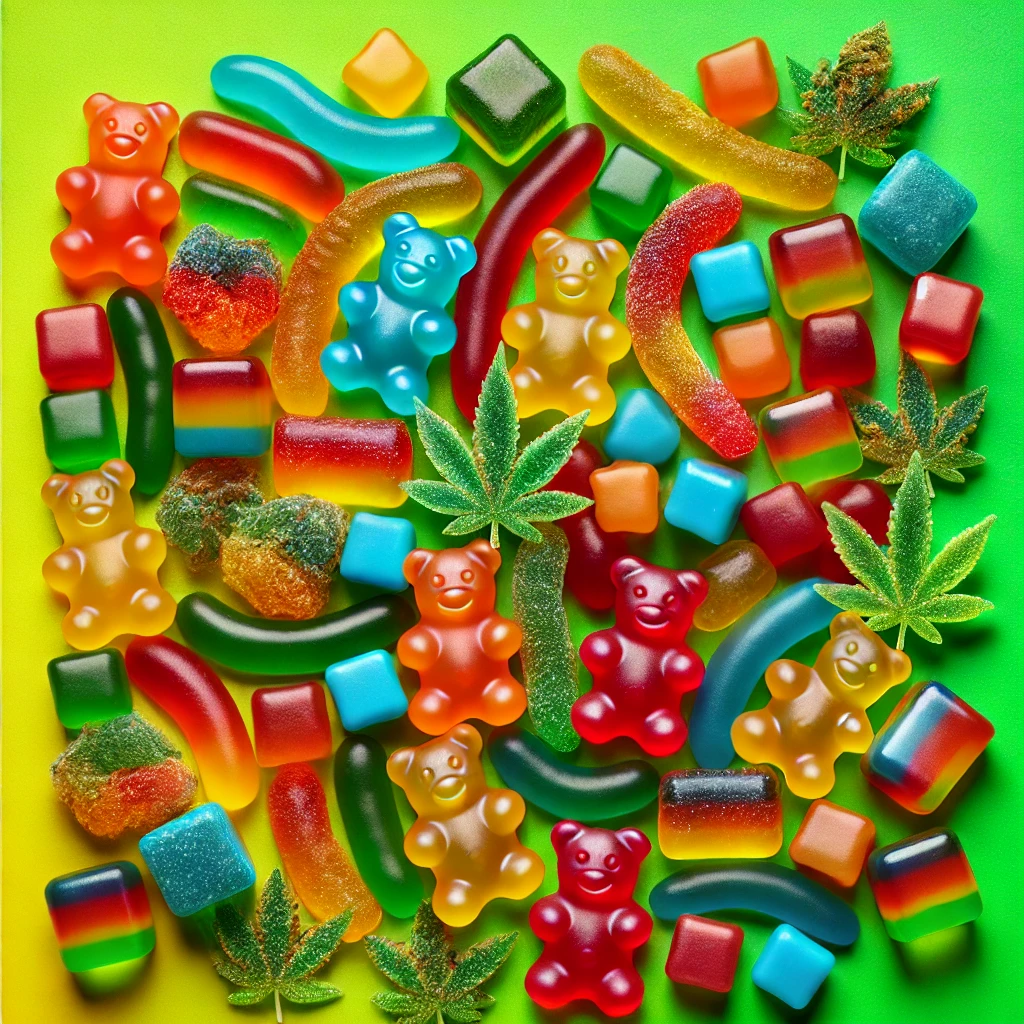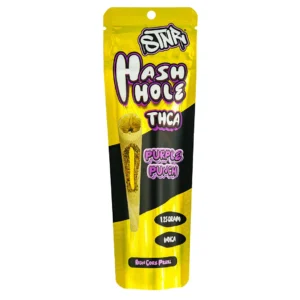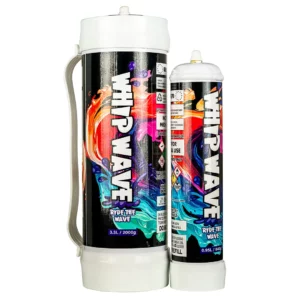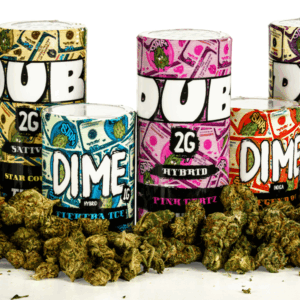Understanding Gummies: Composition and Melting Points
Key ingredients and their roles
Gummies are more than just a tasty treat; they’re a carefully crafted blend of ingredients, each playing a crucial role in texture, flavor, and functionality. The main components typically include:
- Gelatin or pectin: These are the primary gelling agents that give gummies their characteristic chewy texture. Gelatin is derived from animal collagen, while pectin is plant-based.
- Sweeteners: Usually a combination of sugar, corn syrup, or artificial sweeteners to provide sweetness and help with texture.
- Water: Essential for dissolving and combining the other ingredients.
- Flavorings and colorings: Natural or artificial additives that give gummies their distinct taste and appearance.
- Active ingredients: In the case of functional gummies, this could include vitamins, minerals, CBD, or other supplements.
Each of these components contributes to the overall stability and melting point of the gummy. The gelling agent, in particular, plays a significant role in how well the gummy maintains its shape under various temperature conditions.
Typical temperatures at which gummies begin to melt
When it comes to the melting point of gummies, it’s not a one-size-fits-all scenario. However, there are some general guidelines to keep in mind. Gummies typically start to soften and lose their shape at around 90°F (32°C). This temperature is particularly crucial for those living in warmer climates or during hot summer months.
It’s worth noting that different types of gummies may have varying melting points. For instance:
- Gelatin-based gummies are more prone to melting than gelatin-free ones. This is because gelatin has a lower melting point compared to plant-based alternatives like pectin.
- CBD or THC-infused gummies might have slightly different melting points depending on their specific formulation and the presence of additional ingredients.
- Vitamin gummies may have added stabilizers to help maintain their shape at higher temperatures, potentially increasing their melting point slightly.
For comparison, chocolate edibles tend to melt at a higher temperature, around 104°F (40°C). This difference in melting points can be significant when considering storage and transportation of various types of edibles or supplements.
Understanding these melting points is crucial for both consumers and manufacturers. For consumers, it helps in proper storage and handling of gummies, especially during warmer months. For manufacturers, this knowledge is essential in developing packaging solutions and providing appropriate storage instructions to maintain product integrity.
As we delve deeper into the effects of melting on gummies, keep in mind that the composition and melting point of these chewy treats play a significant role in how they react to heat and, ultimately, how their effectiveness might be impacted when they turn into a gooey mess.
The Effects of Melting on Gummies: Potency, Safety, and Dosage
Does melting alter the potency of infused gummies?
When it comes to the burning question, “Do melted THC gummies still work?”, the answer might surprise you. The good news is that melting doesn’t significantly impact the potency of infused gummies, particularly those containing THC or CBD. The THC content in gummies does not degrade unless exposed to heat for a very long time (like weeks or months). This means that your melted gummies are likely just as potent as they were before turning into a gooey mess.
The reason for this stability lies in the chemical properties of THC and other cannabinoids. The vaporization temperature of THC is around 315°F, far beyond typical melting temperatures. So, unless your gummies have been baking in an oven, the active ingredients should remain intact. This resilience is good news for those who’ve accidentally left their stash in a warm place.
Are melted gummies safe to consume?
Safety is a top concern when dealing with melted gummies, and rightfully so. The good news is that it is safe to consume melted gummies in terms of food safety, provided they are within the best-by date and not exposed to extreme conditions. However, there are a few caveats to keep in mind.
While the melting process itself doesn’t make gummies unsafe, it can create conditions that might compromise their quality. For instance, if gummies melt and then resolidify multiple times, it could potentially lead to texture changes or even mold growth if moisture gets trapped. Additionally, if the packaging is compromised during melting, it could expose the gummies to contaminants.
How does melting affect dosage accuracy?
Here’s where things get a bit sticky – pun intended. While melted gummies may still be potent and safe, dosage accuracy becomes a significant concern. Leaving gummies in a hot car can cause them to melt into a single, unevenly dosed blob. This is particularly problematic for THC or CBD-infused gummies where precise dosing is crucial.
If multiple gummies melt together, it is impossible to determine the exact dosage per piece. The active ingredients may not be evenly distributed throughout the melted mass, leading to potential over or under-dosing. This unpredictability can be especially risky with THC gummies, where consuming too much could lead to an uncomfortable experience.
To navigate this dosage dilemma, it is recommended to split melted gummies into smaller pieces and consume them cautiously. Start with a small amount and wait to gauge the effects before consuming more. This approach allows you to still enjoy your melted gummies while minimizing the risk of accidental overconsumption.
In conclusion, while melted gummies may still pack the same punch in terms of potency and remain safe to eat, the real challenge lies in maintaining accurate dosing. As always, when in doubt, it’s best to err on the side of caution and consider replacing severely melted gummies, especially if precise dosing is crucial for your needs.
Tips for Salvaging Melted Gummies
Reforming melted gummies: Practical steps and considerations
If you’re wondering how to fix melted gummies, you’re not alone. It’s a common predicament, especially during hot summer months. Here are some practical steps to consider:
- Refrigeration: The first and simplest step is to refrigerate your melted gummies. Place them in the fridge for a few hours, allowing them to solidify. This method works best for gummies that have only slightly melted.
- Freezing: For more severely melted gummies, try freezing them. Put the melted mass in a freezer-safe container and leave it for a couple of hours. Once frozen, you can break the mass into smaller, more manageable pieces.
- Remolding: If you’re feeling crafty, you can try remolding your gummies. Gently heat the melted gummies in a microwave-safe bowl, stirring occasionally until you have a smooth consistency. Then, pour the mixture into silicone molds and refrigerate until set.
- Separation: For gummies that have stuck together but haven’t completely melted, try separating them while they’re still cold. Use a butter knife or your fingers to gently pry them apart.
Remember, while these methods can help restore the shape of your gummies, they may not perfectly recreate the original texture. Also, be cautious with infused gummies, as the active ingredients may not remain evenly distributed after melting and reforming.
Creative uses for melted or semi-melted gummies
If you’re pondering what to do with melted gummies, consider these creative alternatives:
- Gummy sauce: Melt your gummies further and use them as a sweet, fruity sauce for ice cream or desserts.
- Fruit leather: Spread the melted gummy mixture thinly on a baking sheet lined with parchment paper. Dehydrate in a low-temperature oven or food dehydrator to create a chewy fruit leather.
- Gummy bark: Mix your melted gummies with nuts, dried fruits, or chocolate chips. Spread the mixture on a baking sheet, let it cool, and break into pieces for a unique gummy bark.
- Smoothie boosters: Add small pieces of your reformed gummies to smoothies for an extra burst of flavor and sweetness.
- Baking mix-ins: Chop up resolidified gummies and use them as mix-ins for cookies, muffins, or brownies.
These ideas can work well for regular candy gummies, but remember to be cautious with infused or vitamin gummies, as heat and processing may affect their potency or nutritional value.
When salvaging isn’t an option: Safety first
While it’s tempting to try and save every last gummy, sometimes it’s best to prioritize safety over salvaging. Here are situations where it might be better to discard your melted gummies:
- Compromised packaging: If the melting has caused the packaging to break or leak, contaminants may have entered. In this case, it’s safer to discard the gummies.
- Extreme heat exposure: If your gummies have been exposed to very high temperatures (like being left in a hot car for days), the extreme heat could have degraded the ingredients or encouraged bacterial growth.
- Mold or off-odors: If you notice any signs of mold, unusual discoloration, or strange smells, it’s best to err on the side of caution and throw the gummies away.
- Uncertain dosage: For infused gummies, if the melting has made it impossible to determine the correct dosage, it may be safer to discard them rather than risk over-consumption.
- Expired products: If the melting incident has pushed your gummies past their expiration date, it’s generally safer to replace them.
When it comes to how to unstick gummy vitamins, the same principles apply. However, given the importance of accurate dosing with vitamins, it’s often safer to replace them if they’ve melted significantly. If you’re dealing with just slightly stuck vitamins, try placing them in the refrigerator before gently separating them with a butter knife or your fingers.
Remember, while it’s frustrating to lose a batch of gummies, your health and safety should always come first. When in doubt, it’s better to replace your gummies than risk consuming a product that may have been compromised.
Preventive Measures to Avoid Gummy Meltdowns
Best storage practices for maintaining optimal conditions
When it comes to how to keep gummies from melting, proper storage is key. Here are some best practices to ensure your chewy treats stay in top shape:
- Temperature control: Store gummies in a cool, dry place. Ideally, keep them at a temperature between 60-70°F (15-21°C). Avoid leaving them in direct sunlight or hot areas.
- Refrigeration: For extra protection during hot weather, consider storing gummies in the refrigerator. This is especially important for CBD or THC-infused gummies.
- Airtight containers: Transfer gummies to airtight containers to protect them from humidity and maintain their texture.
- Avoid temperature fluctuations: Constant changes in temperature can cause condensation, which may affect the gummies’ texture and potentially lead to mold growth.
- Separate storage: Keep gummies away from other foods with strong odors, as they can absorb these smells and flavors.
Remember, the interior of a car can reach 100°F in just 25 minutes, even if the outside temperature is only 73°F. This rapid temperature increase makes cars one of the worst places to store gummies, even for short periods.
Innovative packaging solutions and their effectiveness
For manufacturers and those wondering how to ship gummies without melting, innovative packaging solutions can make a significant difference:
- Insulated packaging: Use insulated boxes or bags designed to maintain a consistent temperature. These are particularly effective for short-distance shipping.
- Gel packs: Include refrigerated gel packs in the package to keep gummies cool during transit. These are more effective than regular ice packs as they maintain a consistent temperature for longer.
- Thermal bubble wrap: This reflective material helps deflect heat and maintain a stable internal temperature.
- Phase change materials (PCMs): These advanced materials absorb and release thermal energy to maintain a constant temperature, ideal for longer shipping routes.
- Vacuum-sealed packaging: This can help protect gummies from air and moisture, which can contribute to melting and degradation.
- Temperature indicators: Include temperature-sensitive stickers that change color if the package has been exposed to excessive heat, alerting the recipient to potential quality issues.
The effectiveness of these solutions can vary depending on factors like shipping duration, climate, and the specific type of gummies. It’s often best to combine multiple methods for optimal protection.
What to do immediately if your gummies start to melt
If you notice your gummies beginning to melt, quick action can help salvage them:
- Immediate refrigeration: As soon as you notice softening, place the gummies in the refrigerator or freezer to halt the melting process.
- Separate if possible: If gummies are starting to stick together but haven’t fully melted, try to separate them before refrigerating. This can help maintain individual shapes and dosages.
- Repackage: If the original packaging is compromised, transfer the gummies to an airtight container before refrigerating.
- Avoid handling: Try not to handle melting gummies too much, as the heat from your hands can exacerbate the problem.
- Check for safety: Assess whether the gummies have been exposed to extreme conditions that might compromise their safety or efficacy.
- Document the incident: If these are purchased gummies, especially medicated ones, document the condition they arrived in. This can be helpful if you need to contact the manufacturer or seller.
By acting quickly, you may be able to prevent a minor melting issue from turning into a full-blown gummy disaster. Remember, prevention is always better than cure when it comes to maintaining the quality and effectiveness of your gummies.
Final Thoughts: Embracing the Inevitable with Knowledge and Preparation
The importance of understanding product limitations
Understanding the limitations of gummy products is crucial for optimal use and storage:
- Temperature sensitivity: Gummies are inherently prone to melting at temperatures above 90°F (32°C).
- Shelf life: Even when stored properly, gummies have a limited shelf life.
- Dosage variability: Melting can lead to uneven distribution of active ingredients in infused gummies.
- Packaging constraints: Not all packaging is designed to withstand extreme temperatures or prolonged exposure to heat.
Recognizing these limitations allows consumers to make informed decisions about purchase, storage, and consumption.
Equipping yourself with the knowledge for better consumption experiences
To enhance your gummy consumption experience:
- Read labels carefully: Understand storage instructions and expiration dates.
- Monitor storage conditions: Keep track of temperature and humidity where gummies are stored.
- Learn about ingredients: Different gelling agents (gelatin vs. pectin) affect melting points and texture.
- Understand dosing: For infused gummies, know how melting might impact dosage accuracy.
- Stay informed about regulations: Laws regarding infused gummies vary by location and can change.
- Be aware of quality indicators: Learn to recognize signs of degradation or spoilage in gummies.










